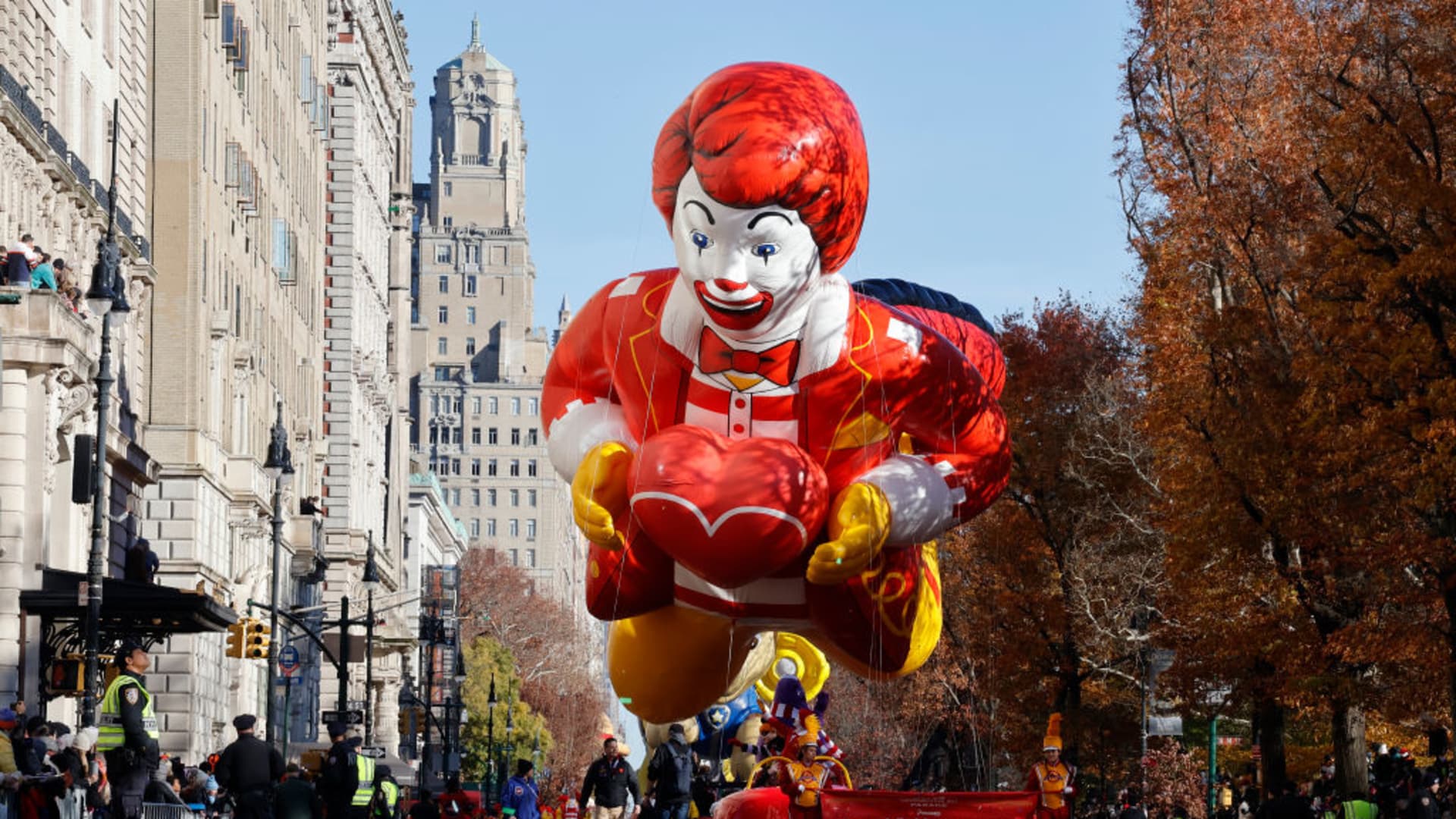Products You May Like
McDonald’s executives painted a rosy portrait of the fast-food giant’s strength and ability to achieve long-term goals at its investor day, but the company faces some potential road bumps heading into 2024.
The event, held Wednesday, featured few surprises and some new long-term targets, and Wall Street’s reaction has been muted. Shares of McDonald’s have been roughly flat since the investor day presentations. Hit by concerns about the broader economy and fears over weight-loss drugs, McDonald’s stock has risen just 8.7% this year, trailing the S&P 500’s gains of 19%.
Those fears about the business have not stopped the fast-food powerhouse from setting ambitious goals.
McDonald’s plans to open nearly 9,000 new restaurants by 2027, including 900 locations in the U.S. Its larger global footprint will boost the company’s sales and help meet higher demand for its Big Macs and McNuggets, according to executives.
But those ambitious plans intersect with an uncertain global economy. China, McDonald’s second-largest market by number of locations, is still struggling to bounce back from the pandemic. Turmoil in the Middle East has hurt McDonald’s sales in that region — and some markets outside of it. And in its home market, recession predictions haven’t panned out yet, but some economists think a downturn may still come.
Here are the three top risks facing McDonald’s heading into 2024:
1) Weakened low-income consumer
In late January, CEO Chris Kempczinski said the company was predicting a “mild to moderate” recession in the U.S. and a “deeper and longer” downturn in Europe in 2023. But his predictions haven’t come true.
“Here we are a year later, and, boy, was I wrong,” Kempczinski said at the investor day. “So I’m a little leery to make any predictions about next year because I think we’re continuing to see that the consumer has been very resilient.”
Though a recession hasn’t hit, Kempczinski also reminded investors that McDonald’s saw low-income consumers pulling back on their spending last quarter. Other companies, such as Walmart, have also called out that trend.
While McDonald’s benefits from high- and middle-income consumers trading down to its Big Macs and french fries, low-income diners are still an important part of its business.
“We walked away from the investor day more concerned than before on the state of low income consumer,” Bernstein analyst Danilo Gargiulo wrote in a note to clients.
2) Rivals’ promotional spending
Ever since the pandemic, McDonald’s has shifted away from using limited-time menu items to draw in customers. Instead, its marketing has centered on the brand itself, like selling core menu items through promotions based on celebrities’ favorite orders. That approach has fueled strong same-store sales growth in recent years, even as inflation stretched diners’ wallets.
In general, the fast-food giant spends a lot of money on marketing and advertising to maintain its brand recognizability and affinity. McDonald’s spends over $4 billion every year on marketing investments, three to four times more than its nearest competitor, Kempczinski told investors on Wednesday.
But McDonald’s might find some of its competitors stepping up their promotional spending next year. Low-income consumers visiting restaurants less frequently means some fast-food chains will lean into deals and limited-time menu items to drive traffic.
McDonald’s may have to decide if boosting its short-term traffic is worth the potential long-term consequences.
“It will be interesting to see how [McDonald’s] adapts to a potentially more promotional environment, and if it is willing to sacrifice the short term to continue to drive the [long-term] brand positioning,” Citi Research analyst Jon Tower wrote in a note to clients.
3) Accelerated expansion plans
Much of Wednesday’s investor presentations focused on McDonald’s plans to accelerate new restaurant openings. The company aims to have a global footprint of at least 50,000 locations by 2027 in its fastest expansion ever.
But history shows that aggressive expansion typically doesn’t end well for McDonald’s. Sales often slide after new restaurants cannibalize existing locations’ customers, hurt franchisees’ profitability and distract from other parts of the business, such as menu innovation.
Investors are largely skeptical of restaurants with plans to expand in 2024 and beyond, given ongoing economic uncertainty and the shaky consumer, Barclays analyst Jeffrey Bernstein said in a note to clients. But he also noted that McDonald’s is coming from a position of strength and has spent recent years remodeling locations rather than building new ones.
Bernstein isn’t the only analyst with an optimistic view on McDonald’s expansion strategy.
“Growing units off of an already remodeled existing unit base, where core menu is driving high profitability, and towards only the best franchisees is a change vs prior regimes,” J.P. Morgan Securities analyst John Ivankoe wrote in a research note.
And executives reassured investors Wednesday.
“We’ve learned the lessons of quantity over quality … We’ve spent the last year, country by country, literally city by city, making sure we were confident about where we saw the growth opportunities and how we could actually have the teams out in the field to be able to go execute it,” Kempczinski said.
